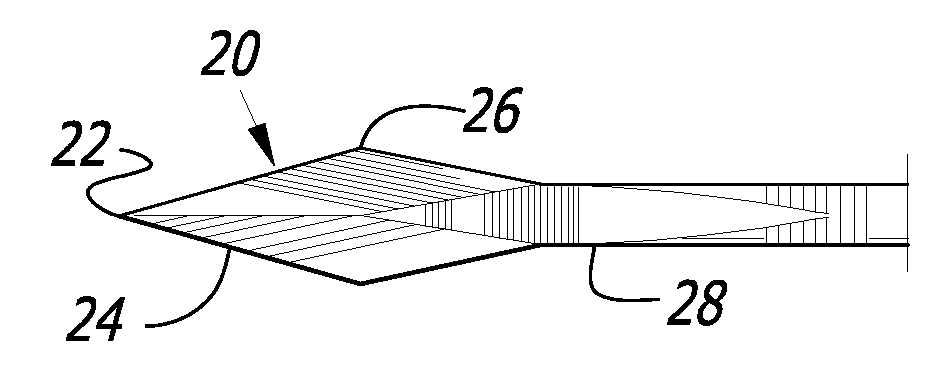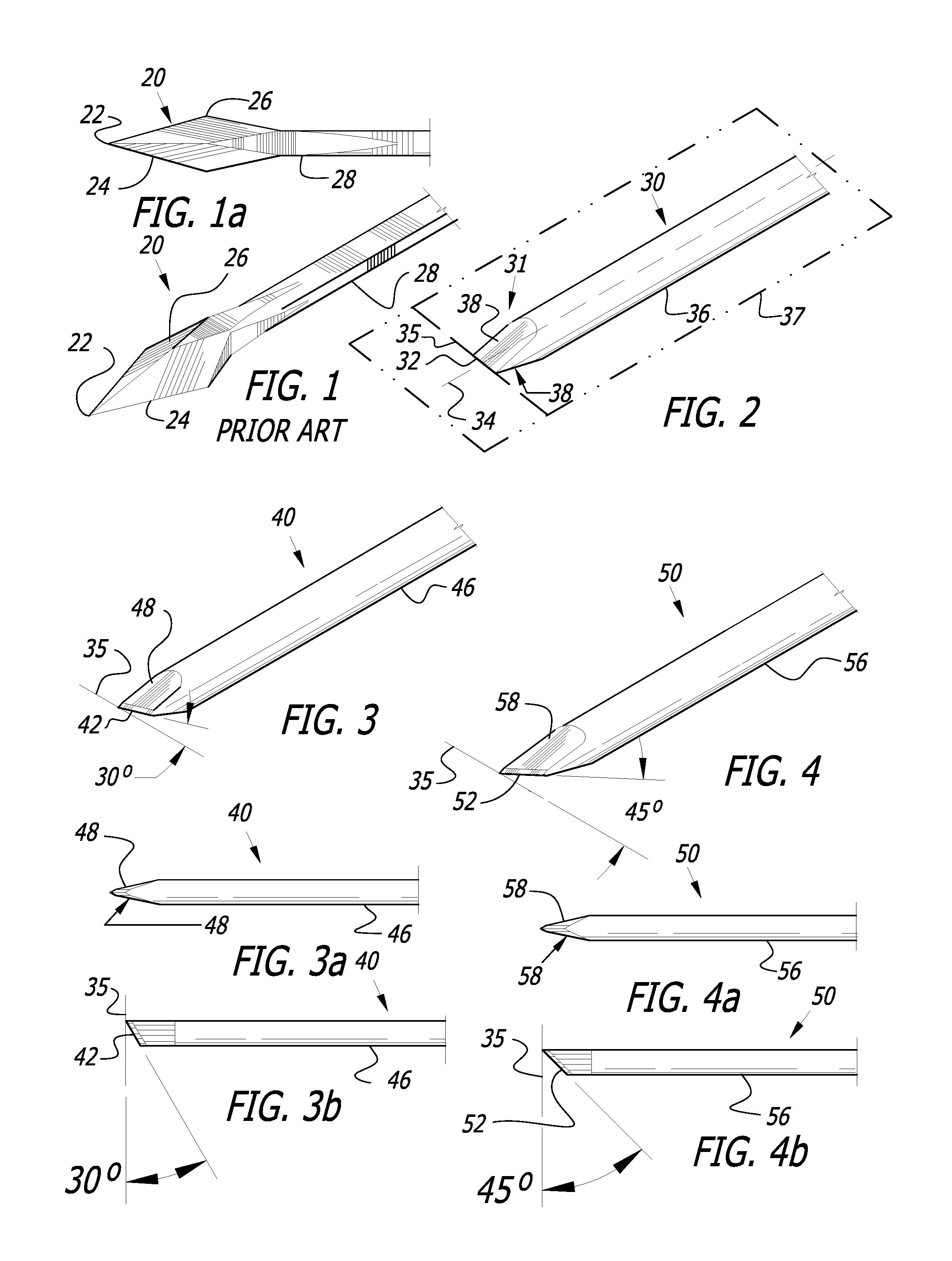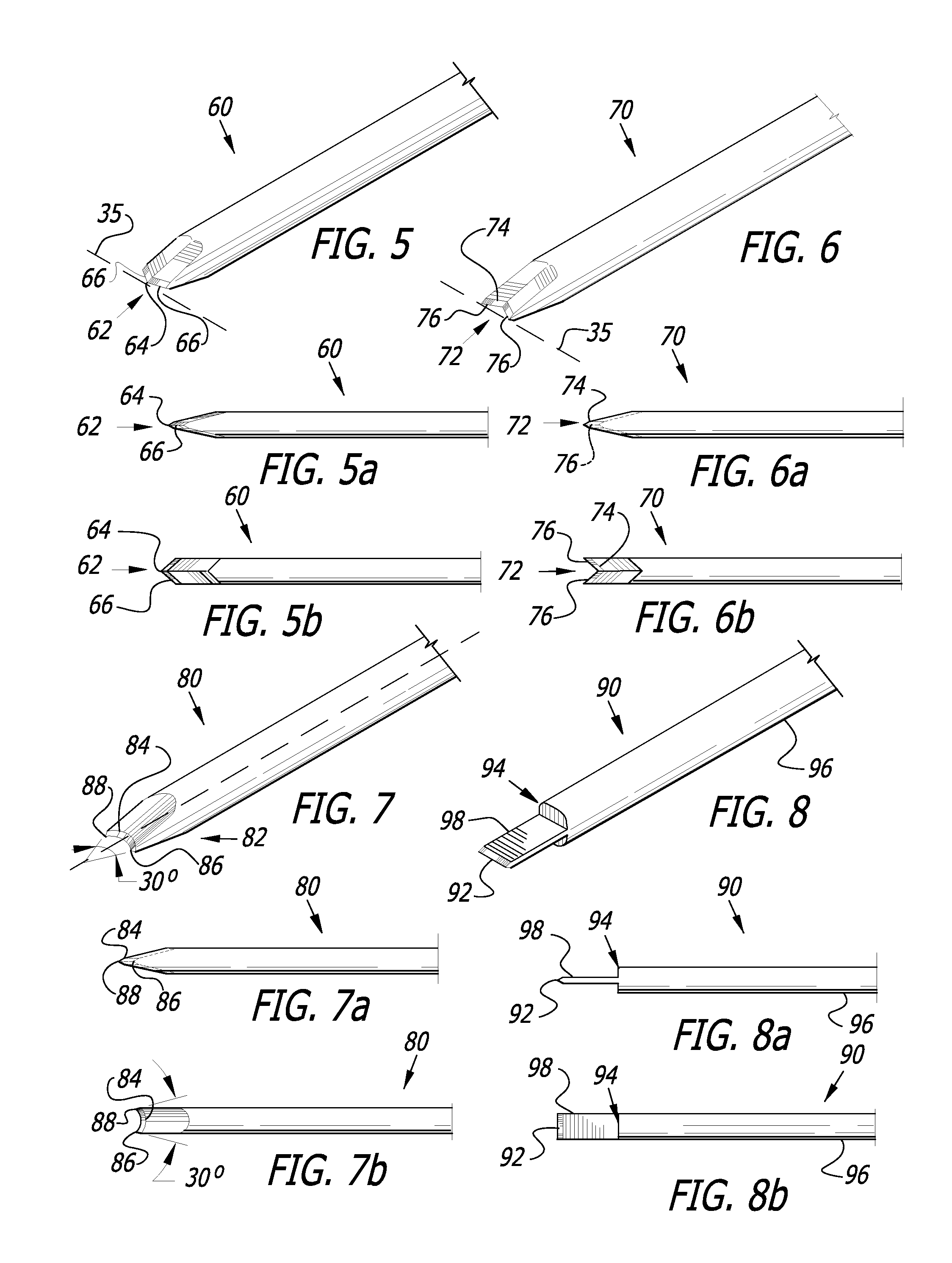Microvitreoretinal surgery blades
- Summary
- Abstract
- Description
- Claims
- Application Information
AI Technical Summary
Benefits of technology
Problems solved by technology
Method used
Image
Examples
first embodiment
[0055]FIGS. 8, 8a and 8b depict a seventh preferred embodiment of the inventive MVR blade 90, sometimes referred to as a guarded blade. In this embodiment, the MVR blade 90 may have an edge similar to any of the earlier embodiments. FIG. 8 illustrates a thin chisel shape, i.e., a flat or horizontal, chisel-type edge 92, configured similarly to the first embodiment MVR blade 30. The distinguishing feature of this embodiment is the step-down 94, i.e., sudden reduction in cross-sectional width, from the shaft 96 to the blade body 98. The step-down 94 operates to limit the depth of penetration to reduce the risk of scleral perforation or other negative effects of over-insertion. The step-down 94 provides a lip or stop ledge 94a on the end of the shaft 96 that contacts but does not cut or penetrate tissue. It is this contact that stops the cutting motion and prevents over-insertion. Although the blade body 98 may be longer, it is preferably approximately 1 mm-2 mm in length. As in the ot...
sixth embodiment
[0056]FIG. 9 illustrates an environmental view of an MVR blade 80 of the present invention, in this instance the sixth embodiment, penetrating an eye 100 through an incision 102. This and any other similar procedure may be performed with a blade of any other embodiment described herein. In accessing the retina of an eye for performing a transvenous chorioretinotomy or other similar procedures, an MVR blade must pass through the eye 100 in this way and access the retina at the back of the eye 100.
[0057]FIGS. 10 through 17 illustrate various views of an MVR blade 80 performing such a transvenous chorioretinotomy procedure. In these illustrations, the interior 100a of the eye is on top and the exterior 100b of the eye is on bottom.
[0058]In FIGS. 10 and 11, the blade 80 is approaching the back of the eye 100, which is comprised of various layers, including the retina 104, the choroid 106 and the sclera 108. The retina 104 contains a vast number of veins 110, of which only one is shown i...
PUM
 Login to View More
Login to View More Abstract
Description
Claims
Application Information
 Login to View More
Login to View More - R&D Engineer
- R&D Manager
- IP Professional
- Industry Leading Data Capabilities
- Powerful AI technology
- Patent DNA Extraction
Browse by: Latest US Patents, China's latest patents, Technical Efficacy Thesaurus, Application Domain, Technology Topic, Popular Technical Reports.
© 2024 PatSnap. All rights reserved.Legal|Privacy policy|Modern Slavery Act Transparency Statement|Sitemap|About US| Contact US: help@patsnap.com










